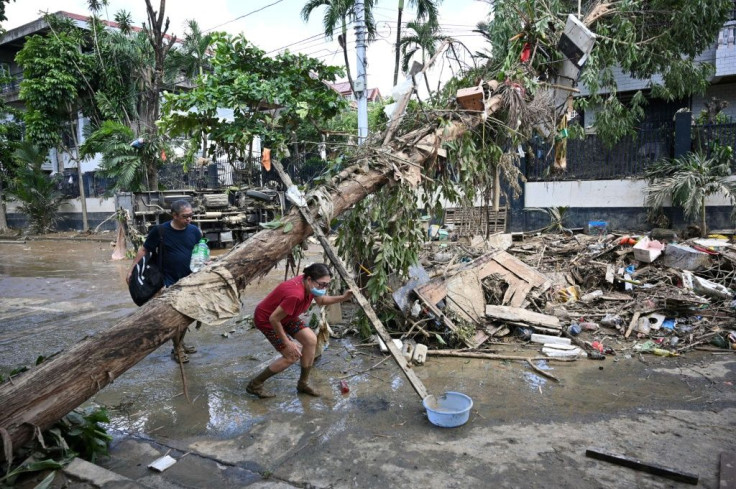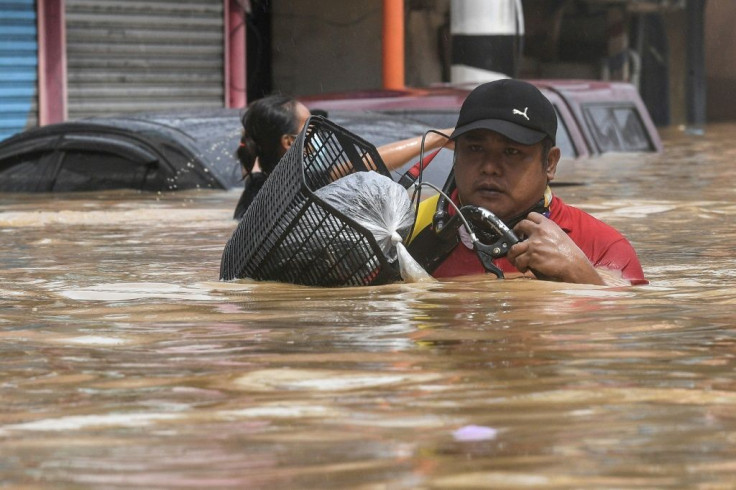Death Toll In Typhoon-hit Philippines Rises To 27
The death toll in the typhoon-battered Philippines has risen to at least 27, official figures showed Friday, after some of the worst flooding in years swamped villages and forced thousands to flee their homes.
Torrential rain dumped by Typhoon Vamco -- the third powerful storm to hit the country in as many weeks -- inundated low-lying areas of Manila and surrounding provinces, trapping people on rooftops and balconies.
As floodwaters receded and residents began to return home, the scale of the destruction left by Vamco became clearer.

In Marikina City, one of the hardest-hit areas of the capital, mud-covered washing machines, televisions, couches, office chairs and bicycles were piled up on streets as residents swept debris and murky water from their houses.
"I don't know where to start," Lina Senga, 80, said as she sat inside her damaged house.
"I'm hoping and I trust God that he will never abandon us."

Hundreds of thousands were still without power after Vamco lashed the most populous island of Luzon on Wednesday and Thursday, triggering landslides, toppling trees and cutting off roads.
The typhoon claimed at least 27 lives, Civil Defense figures showed.
But the final toll will likely be higher as disaster agencies verify some fatalities.

The Philippine National Police has recorded 42 deaths.
Authorities vowed to distribute food and other essentials to victims, many of whom were still recovering from typhoons Molave and Goni that killed dozens of people, destroyed tens of thousands of houses and knocked out power to swathes of the country in recent weeks.
Defending the response to the latest disaster, presidential spokesman Harry Roque said the government "acted fast".
"Unfortunately we couldn't do anything about the floodwater which rose too fast... but we made sure no one will be left behind," he said.
Officials said many people had ignored orders to evacuate their homes and were caught by surprise by the fast-rising waters.
Police, soldiers and coast guard were deployed to assist in rescue efforts, using boats to reach thousands of people stranded. The operations were made more complicated by the coronavirus outbreak.
The severity of the flooding in Manila and neighbouring province of Rizal sparked comparisons with the devastation caused by Typhoon Ketsana in 2009 that killed hundreds.
The Philippines is hit by an average of 20 storms and typhoons every year, which typically wipe out harvests, homes and infrastructure in already impoverished areas.
It is particularly affected by climate change with many people living in coastal areas that are vulnerable to storm surges engorged by rising seas and severe flooding.
© Copyright AFP {{Year}}. All rights reserved.




















